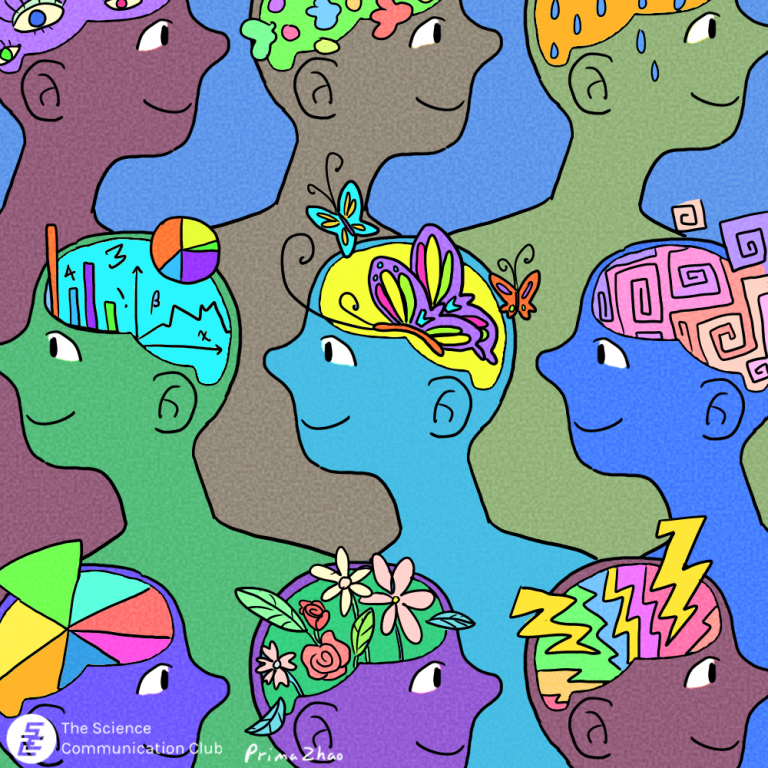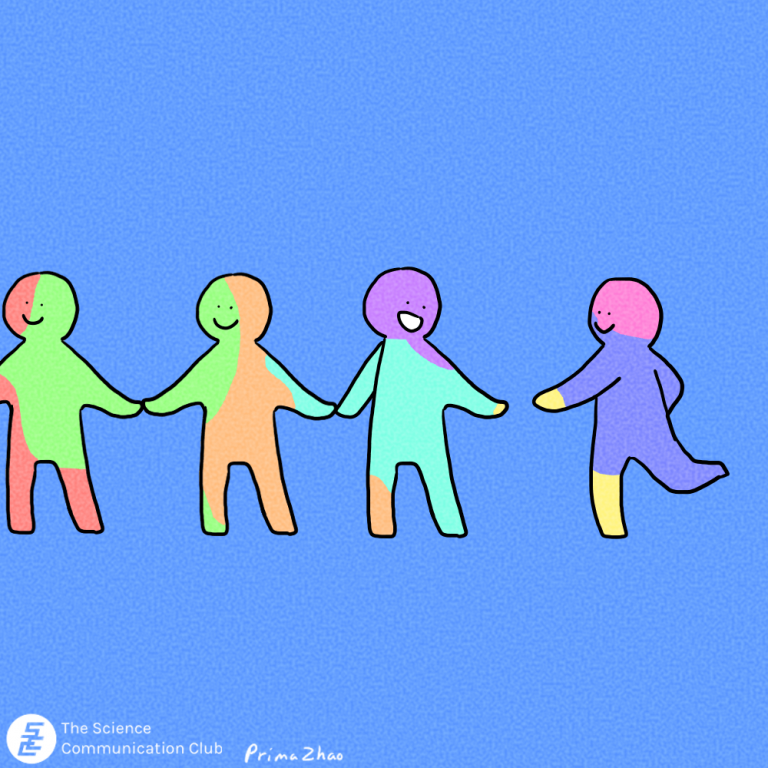
Written by Charlotte Zhang
Illustrated by Prima Zhao
Autism is a neurodevelopmental condition that covers a wide spectrum of characteristics. Traditionally, it is medically referred to as “Autism Spectrum Disorder” (ASD) and treated as a developmental deficit. Both mainstream media and research publications typically convey negative images of Autism – using pejorative words or those that emphasize a ‘lack of’ such as: disorder, impairment, and deficit. Moreover, both information platforms simultaneously overlook most of the positive evidence of autistic strengths and abilities. In response to the persistent mistreatment and discrimination around autistic individuals, the term ‘neurodivergence’ was founded to reduce the stigma surrounding Autism and other neurodiverse conditions.
Autism is a highly variable condition that exists on a spectrum of different characteristics ranging from low-need to high-need (Note: The term “low-” and “high-functioning” were used before, but they are not ideal descriptions because they have a negative implication on high-need individuals and Autistic individuals should not be compared against each other). Depending on the type of neurodivergence, some individuals also experience seizures and other co-morbid conditions. Amongst the variation in behaviours, the common core characteristics of Autism are varied social communications, and repetitive behaviour and interests. Although there isn’t an exact known cause of Autism, a combination of both genetic changes and external environmental factors are usually involved. According to the Government of Canada, approximately 1 in 66 children are Autistic in Canada, which means that there are 135,000 autistic individuals in Ontario alone (Public Health Agency of Canada, 2016). With over a hundred thousand Autistic people in our province, it is important to make sure they feel as welcomed in the society as neurotypical people are.
The Neurodiversity movement aims to empower and include neurodivergent individuals alongside neurotypical individuals in many ways. The abolishment of using words like “disorder” or “deficit” eliminates the implication that neurodivergent individuals are “inferior” to neurotypical individuals, allowing them to celebrate themselves as unique and equal individuals. In fact, in a survey study done by Kapp et al. (2013) on people’s perception about Autism, people who self-identify as Autistic and are aware of neurodivergence tend to view Autistic as a positive identity. Moreover, similar answers were obtained by non-Autistic people who are educated on neurodiversity. By raising awareness and reducing existing stigma surrounding neurodivergence, the general public can be more educated on neurodivergent individuals and welcome them as equals in society. The neurodivergence movement also challenges traditional societal standards of evaluating an individual’s worth purely based on their intelligence or their social capabilities. There are so many other things that makes us human other than these two qualities, and if we don’t want to be limited by just these labels why should we use them to stereotype neurodivergent individuals?

Indeed, people with Autism not only perform similarly to neurotypical people in some tasks, but they also sometimes even perform better. A study done in 2018 asked Autistic neurotypical children to draw pictures based on the same scenes at the park. Both Autistic and TD children showed equal artistic capabilities, but autistic children tend to draw nonhuman objects while TD children drew more human subjects (Masataka, 2018). Moreover, intelligence agencies like GCHQ from the UK are specifically recruiting neurodivergent individuals because they are particularly good at “joining the dots, simplification, seeing the bigger picture and teamworking”. As the director of GCHQ says, with the right mix of minds, anything is possible, and neurodivergent individuals are without question an integral part in providing their valuable input in all kinds of operations. This goes to show that just because Autistic individuals might be different socially or on the traditional sense of “IQ”, they are gifted exceptionally in many other ways, no different than the rest of us.
As the social model of disability suggests, “a person is disabled not by their impairment, but by the failure of environment to accommodate their needs” (Oliver, 2018). As neurotypical individuals, we should try our best to create a welcoming and inclusive environment for neurodivergent individuals. That doesn’t mean we should go out of our way to excessively try to give them “assistance”. We should treat them equally just like how we interact with any other person. As my professor once suggested in a lecture about Autism, we should focus first on their strengths and then offer assistance only when they need it or feel comfortable with it. There are over 7 billion people inhabiting this planet we call home. Think about how boring it would be if every single person acts the same way. The diversity of humans and our individual differences is what makes the world so complex yet intriguing. If we embrace and respect these differences, our kindness can make a small yet important step towards an inclusive and diverse society.
Key Words: Neurodiversity, Neurodivergence, Autism Spectrum
Sources:
- den Houting, J. (2019). Neurodiversity: An insider’s perspective. Autism: The International Journal of Research and Practice, 23(2), 271–273.
- Kapp, S. K., Gillespie-Lynch, K., Sherman, L. E., & Hutman, T. (2013). Deficit, difference, or both? Autism and neurodiversity. Developmental Psychology, 49(1), 59–71.
- Masataka, N. (2017). Implications of the idea of neurodiversity for understanding the origins of developmental disorders. Physics of Life Reviews, 20, 85–108.
- Masataka, N. (2018). Neurodiversity and artistic performance characteristic of children with autism spectrum disorder. Frontiers in Psychology, 9, 2594.
- Oliver, M. (2018). Understanding Disability. Macmillan International Higher Education.
- Peñagarikano, O., Abrahams, B. S., Herman, E. I., Winden, K. D., Gdalyahu, A., Dong, H., Sonnenblick, L. I., Gruver, R., Almajano, J., Bragin, A., Golshani, P., Trachtenberg, J. T., Peles, E., & Geschwind, D. H. (2011). Absence of CNTNAP2 leads to epilepsy, neuronal migration abnormalities, and core autism-related deficits. Cell, 147(1), 235–246.
- Public Health Agency of Canada. (2016, January 18). Surveillance of autism spectrum disorder (ASD). Canada.Ca. https://www.canada.ca/en/public-health/services/diseases/autism-spectrum-disorder-asd/surveillance-autism-spectrum-disorder-asd.html